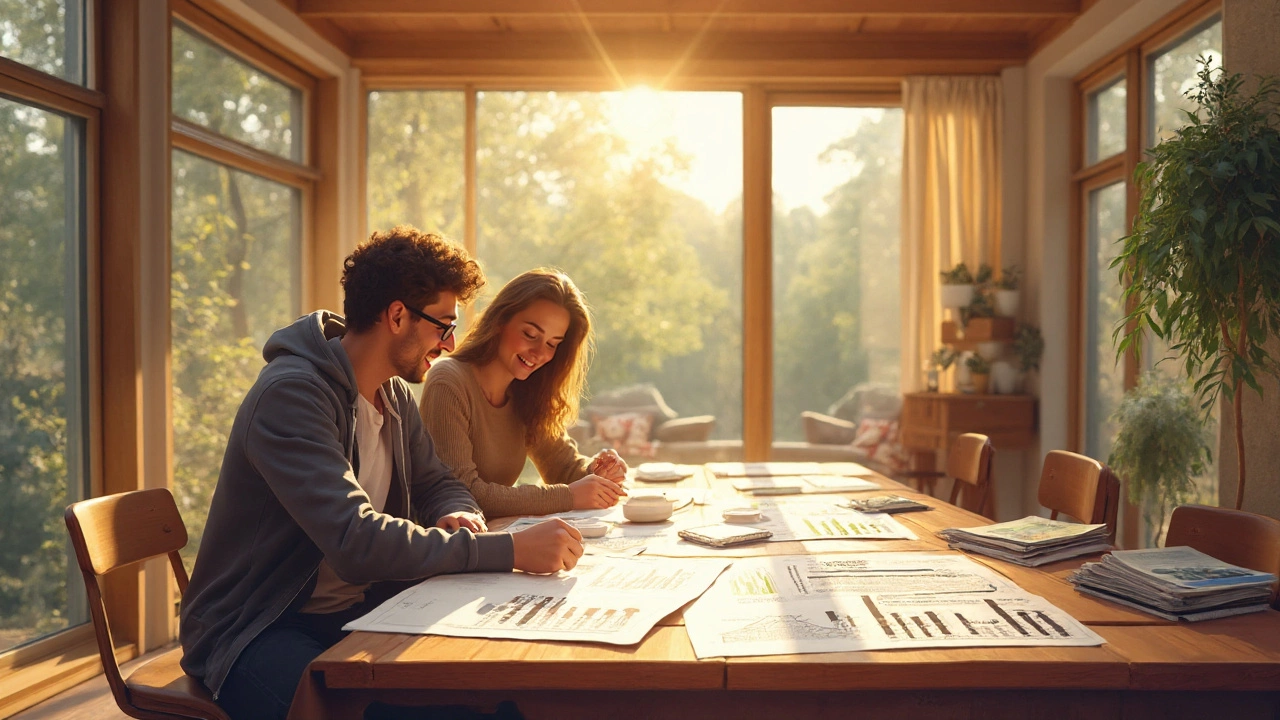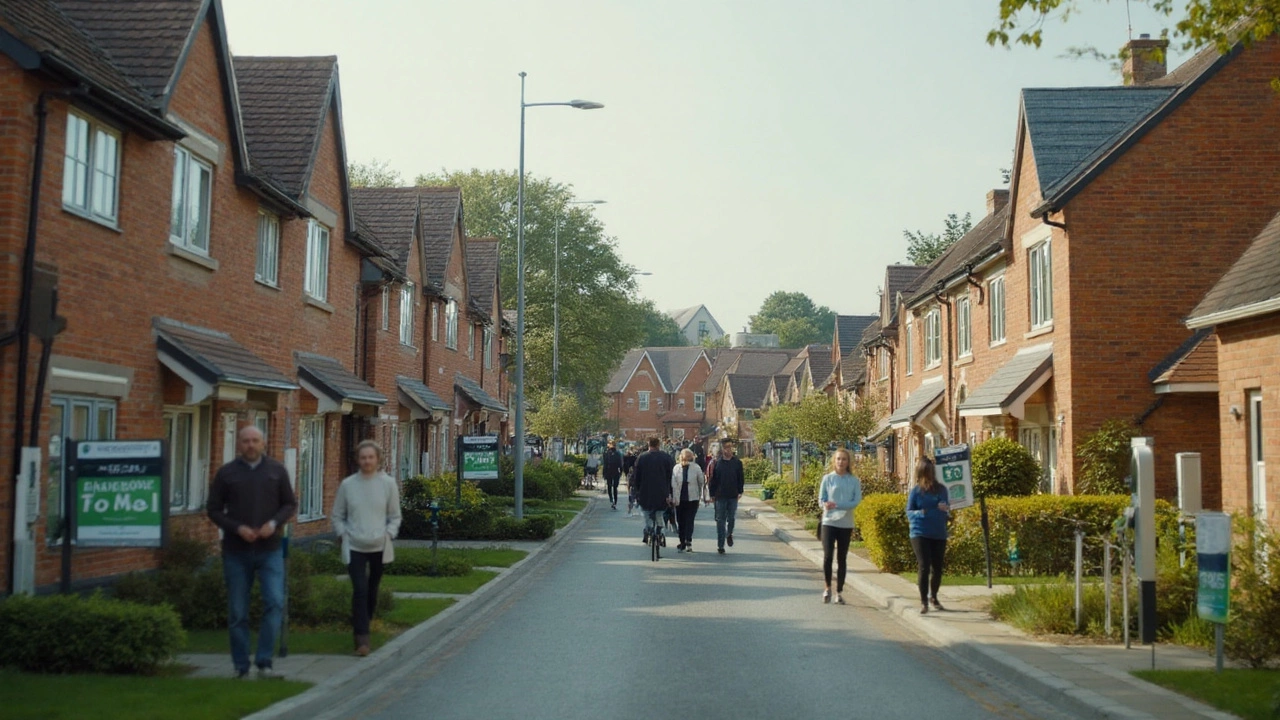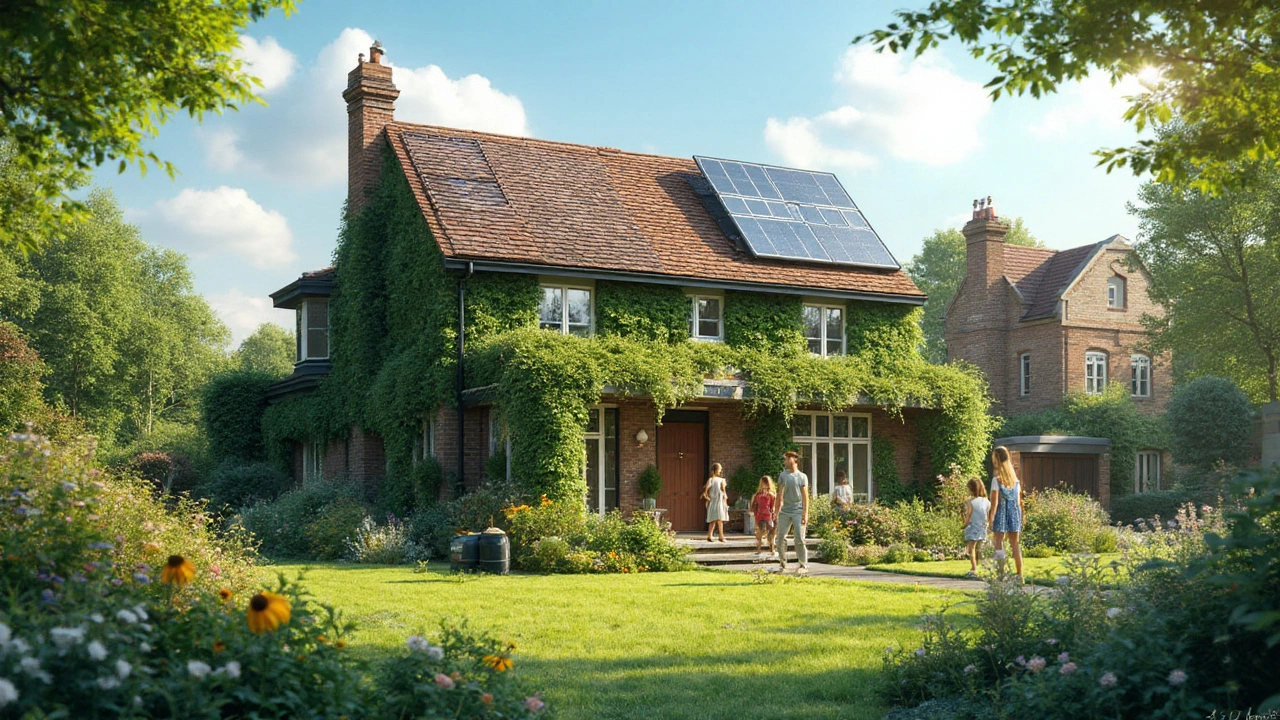Picture living somewhere you barely touch the thermostat, never see condensation on your windows, and you feel a bit smug every month when you check your energy bills. Then someone asks, “But aren’t eco homes super expensive?” That question gets tossed around so much, it’s almost an urban legend at this point. But the truth? It’s a whole lot more complicated—and a lot more surprising—than you’d think. The numbers, the choices, the payoffs, and even the math used to measure true cost, all look different when you zoom in. And yeah, the difference between a green dream home and a budget-buster sometimes comes down to the tiniest design detail or material swap.
What Does “Eco Home” Even Mean?
So first, let’s clear the air about what we’re talking about. An eco home isn’t just a house with a solar panel slapped on the roof. It covers design, materials, insulation, heating, water, air quality, and more. It’s sometimes called a “sustainable home,” “green home,” or “energy efficient home,” but all those labels boil down to the same basic question: “Does this home use fewer resources, create less waste, and cost less—in money and the planet—than a regular home?”
Eco homes cost more upfront than standard homes, right? That’s the stereotype. Sometimes it’s true—think triple-glazed windows, advanced insulation, solar batteries, or living roofs. But it totally depends on what choices you make, the location, your builder, and even the shape of your house. Some eco features (like upgraded insulation) pay you back almost immediately. Others (like designer solar panels or rainwater harvesting systems) stretch out over years, or might only break even when energy prices shoot up.
Fact: In the UK, the Office for National Statistics found eco-friendly new builds can be only 1–8% pricier than standard houses, but that’s shrinking every year as tech gets cheaper. In the US, a Department of Energy report pegged the average extra upfront cost for a certified green home at about 3–5% higher. In sunny states like California, the cost difference is often wiped out in less than a decade thanks to high energy prices and strict building codes.
And, trust me, you don’t have to go full Grand Designs to live greener. Swapping to renewable tariffs, fitting LED lights, or adding a super-efficient water heater also count. Some eco homes are futuristic, others just look like regular cottages—there’s no one way to be green.
Where the Money Goes: Real Costs of Building or Buying Eco Homes
Alright, let’s break down where budgets explode (or don’t). Building or buying an eco home has a few big ticket items: site prep and orientation, insulation, windows, heating/cooling systems, renewable energy, water management, and smart home tech. Some of these are must-haves, some are nice-to-haves, and others totally depend on personal taste or climate. That’s why you see eco homes built by millionaires in California, and also super-affordable eco-friendly modular homes for first-timers in rural Wales.
Your main spends fall into these categories:
- Land costs and location: Eco features like passive solar design work best when the land’s got the right direction, sun, and wind—it might mean paying more for the best plot, or even less if you find a hidden gem.
- Insulation and airtightness: This is usually the biggest up-front investment, but it’s not fluffy money. Proper insulation (think thick walls, good windows, smart gaps) can cut your heating costs by half.
- Heating and cooling: Swapping gas boilers for underfloor heating, heat pumps, or wood pellet stoves isn’t cheap, but the savings are long-term. In Sweden, 95% of new builds use heat pumps. Not fancy—just smart.
- Solar panels and energy tech: Solar basic kits have dropped in price by more than 80% since 2010. Battery storage is still pricey, but you can now get payback in 7-10 years in places with high energy costs or good government incentives.
- Water and waste: Rainwater harvesting, low-flow fixtures, and eco-toilets can be quite cheap or pricey, depending what you choose. Some folks spend less than $500, others go all-out and spend ten times that on “gray water” systems.
- Materials: Local wood, recycled steel, reclaimed brick? It can feel fancy, but often it’s just about good sourcing. Timber frame is often cheaper and better insulated than brick, especially in the UK and Scandinavia.
Here’s a quick glimpse of the price differences in key items based on what I’ve researched and people I’ve met (from eco architects in Brighton to folks in Vermont):
| Feature | Standard Home | Eco Home |
|---|---|---|
| Insulation (per sq meter) | $11-$19 | $19-$27 |
| Triple-glazed windows (per window) | $230-$370 | $370-$520 |
| Solar PV (average home, installed) | N/A | $8,000-$15,000 |
| Air/ground heat pump system | $6,000-$8,500 | $12,000-$18,000 |
| Low-flow toilets/showers | $150-$300 | $250-$400 |
See, the catch is not every upgrade is needed for every house. My friend near Manchester spent less than 2% more on her cottage reno by focusing only on insulation and window upgrades—no extra tech, no fancy extras. She saves about $70/month on heating, and tons on cooling because of thicker walls and smart design. She didn’t pay for solar because she’s in the shade most days. It’s all about picking battles that fit your budget, climate, and priorities.

Payback Time: When Do Eco Homes Actually Save You Money?
Most people get stuck on sticker shock, but the story isn’t finished with the initial invoice. What people often miss is how long those eco features take before they start saving you real money—sometimes called “payback period.” Ignore the hype about “25 year returns” or “never breaks even.” In lots of real cases? The payback comes way sooner than expected, especially when you add up lower utility bills, tax credits, resale price, and that uncool gift: protection from future energy price spikes.
A study by the Rocky Mountain Institute in the US found that “net zero” ready homes (homes that generate as much energy as they use) built in 2023 had payback periods of 6 to 12 years, depending on local utility rates and climate. If you picked smart upgrades—like airtight insulation, passive solar in colder areas, or solar panels in sunny spots—you could shave that time by 40%. Once the payback period ends, it’s like getting a small pay-rise every month, forever.
And let’s not forget maintenance. Eco homes designed well have fewer moving parts, better moisture control, and building fabrics that last longer. Damon and I called it “future-proofing.” Our first home upgrade’s fancy heat pump cost twice as much as a gas boiler, but we haven’t had to fix it in eight years. Compare that to my sister’s, who’s called a plumber five times when her radiators played up.
Resale value is another surprise. In 2023, Zillow found US eco homes and homes with green certifications like LEED or ENERGY STAR sold for about 7% more than comparable homes. In the UK, bank studies showed buyers were willing to pay extra for the lowest energy bands—probably because people get tired of high bills and cold rooms.
Here are a few ways eco homes can save money, short and long term:
- Energy bills: Insulation, smart windows, and efficient heating often cut bills by 30-60% instantly.
- Renewable subsidies: Governments offer grants or tax rebates for home solar, heat pumps, and even green roofs. In England, the Boiler Upgrade Scheme pays up to £7,500 for a new heat pump.
- Insurance: Some insurers give discounts for certain eco upgrades (like water sensors or smart leak detectors).
- Low maintenance: Natural finishes (lime, timber, non-toxic paint) need less upkeep than regular materials.
Even if energy prices stay flat for a while, green upgrades keep paying back with comfort and better air quality. No more freezing bedrooms on winter mornings or sticky, stuffy summer nights. Plus, you can brag about your carbon footprint at dinner parties (just kidding... sort of).
How to Save: Tips for Making Eco Homes Affordable
Not everyone can throw a pile of cash into a zero-carbon mansion, but there are ways to make eco homes much more affordable—whether you’re building from scratch, buying, or just giving your old place an overdue glow-up. Here’s what worked for friends, family, and, yes, even Damon and I:
- Prioritize: Pick 1-2 big wins based on your climate. Cold and damp? Focus on insulation and airtight doors. Sunny but chilly? Go for solar panels and south-facing windows. Spread your money where it helps most.
- DIY where you can: Painting with eco paints, laying wool insulation, or fitting your own draught excluders are all weekend projects that save on labor costs.
- Modular or prefab: Modular eco homes use less material, have less waste, and are usually cheaper. Some companies in Europe offer prefab eco cottages at 15% less than traditional builders.
- Find incentives: Check your city or state for subsidies or zero-rate loans. Australian states, for example, pay $2,000–$5,000 rebates for home energy upgrades. The US tax credit for solar was bumped up to 30% until 2032.
- Choose simple designs: Fancy curves and odd roof lines make it hard to insulate and leak-proof. The classic rectangle or L-shape is both beautiful and efficient.
- Salvage and reclaim: Reused doors, bricks, and floorboards add style, and you might get them for free from demolition yards if you ask nicely.
- Join a co-op or green community: Shared purchasing power means bulk deals on insulation, solar panels, and advice—plus instant neighbor envy. Check local boards or Facebook groups for group-buy schemes.
The beauty of eco homes is you don’t need everything at once. Start with the low-hanging fruit—like LED lights, draught-proofing, or even a smart thermostat. As you save, upgrade the bigger stuff. Home energy audits, sometimes free from councils, can pinpoint the worst leaks in your place and rank what’s worth fixing first. No one expects you to go off-grid overnight unless you’re actually dreaming of goat herding in Wales.
If you’ve got the itch to go big, get three quotes for every job and ask your builder about “fabric first”—which means focusing on the shell (walls, roof, windows) before diving into expensive tech. That’s where you’ll get the best bang for your buck.

The Real Value: Comfort, Health, and Planet-Friendly Living
It’s easy to get stuck on price tags—but there’s this sneaky bonus to eco homes nobody tells you about: how different they feel. Not just in your wallet, but day-to-day comfort. Good insulation means rooms that never feel like freezers or saunas. Fresh-air systems mean you’re not sniffling every morning from damp or mold. Less noise, softer light, better sleep. Damon jokes our heat pump has improved our marriage—no more arguments over nighttime temperatures.
Let’s be real, health is priceless. Eco homes use less toxic finishes, better air quality, and moisture controls, cutting your risk of things like allergies, asthma, or just being perma-sniffly all winter. My friend down the street saw her son’s eczema ease up when they swapped carpets for wood and added decent ventilation. Plus, living in a place that treads lighter on the planet just feels good. Every year, the average American home churns out 5–8 tons of carbon. Cutting that in half isn’t just good for your household, it’s good for the future.
And the fun part? Tech keeps changing. What costs premium now drops in price fast. LED bulbs and solar panels were wild luxuries a decade ago. Now, even budget homes are built with them as standard. Green mortgages (with lower rates for efficient homes) popped up in dozens of countries since 2020. Your planet-friendly choices won’t just save money, but bank your home’s value as green standards become the norm, not the exception.
“Are eco homes expensive?” Not always, and not for long. Once you look past the sticker price to monthly savings, better health, and the feeling of living in a well-made nest, the math tells a very different story than the one you see on house-flipping reality TV. The trick is starting small, making smart swaps, and seeing it as a journey—and hey, enjoying the bragging rights when your place is the cosiest, quietest, and most planet-friendly on the block.
